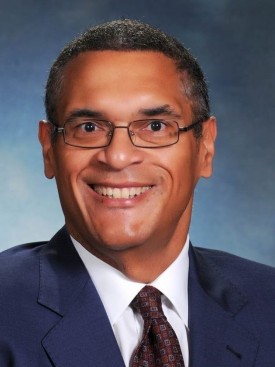Using a Commercial Shared Savings Program to Reduce Care Costs
A commercial shared savings program that leverages industry-standard performance measures can create substantial healthcare cost reductions for a payer.

Source: Thinkstock
- A commercial shared savings program equipped with the right leadership, clinical insights, and comprehensive care strategies can help payers save significantly on healthcare costs and produce exceptional beneficiary outcomes.
In order to achieve these results, Blue Cross Blue Shield of Arizona (BCBSAZ) has developed a shared savings program with ACO Partner, a Change Healthcare company.
By the end of 2016, BCBSAZ paid out $145,000 in shared savings to 148 providers. Currently, the shared savings program includes 725 participating providers who treat about 45,000 BCBSAZ beneficiaries.
Dr. Woodrow Myers, Chief Medical Officer and Health Strategist at BCBSAZ, says that developing a successful shared savings program requires strong buy-in from stakeholders and that payers should start working now to generate that enthusiasm within their own organization and among their provider partners.

“Any health plan that doesn't have a team of people dedicated to this effort for value-based care, or any plan that's not trying to engage the community of providers and partnerships in different ways, is probably going to fall behind,” Myers said.
READ MORE: How Payer Philanthropy Can Address Social Determinants of Health
Commercial payers that are developing a brand new shared savings program need a strategic plan to address provider participation and stakeholder alignment, said John Wallace, President and COO at ACO Partner.
“The program, in the initial steps, was really all about how we can integrate the technology and the resources together to bring in doctors without asking these providers and their staff to do a lot of work in the beginning,” Wallace said.
Payers are direct beneficiaries of shared savings programs because these initiatives can help to contain costs and high spending. However, providers may not want to move from a fee-for-service model or could have trouble understanding how a new shared savings model works.
BCBSAZ staff and the ACO Partner team coordinated participation meetings with in-network providers to improve physician participation. The meetings educated BCBSAZ providers on how the shared savings program would work, which allowed the team to onboard providers with minimal effort.
Myer added that the payer needs to be the entity that drives change and acts as a leader to implement value-based reimbursement of any kind.
READ MORE: Pros and Cons of Small Business Health Options Program Health Plans
“Our job is to optimize the relationship between the member, the provider, and the client, use the tools that are available today, and accelerate the momentum that we see in the marketplace today,” Myer said. “This is especially important to ensure that every dollar is being spent wisely.”

The creation of a shared savings program requires the use of performance measures in order to develop savings goals, says Wallace.
In 2015, BCBSAZ and ACO Partner chose specific HEDIS measures to support quality improvement monitoring, including ED visits, hospital admissions, low acuity non-emergent (LANE) visits, imaging tests, generic vs. brand medication use, and all-cause hospital readmissions.
“The HEDIS measurements we chose were measurements that are easy to measure through claims data,” Wallace said. “From the beginning of the program, we wanted to be as light-touch as possible with the providers themselves about performance changes.”
“We made the investments and took on the responsibility of really assisting the staff and the doctors,” he continued. “We were educating these providers with available clinical data about which patients we knew needed to be measured, based on the metrics that we set forward.”
READ MORE: How Payers Can Succeed Under Updated 2019 HEDIS Measures
From 2015 to 2016, BCBSAZ experienced improvements in key performance measures that drove cost reductions for the payer.
Shared savings performance gains included a 0.6 percent reduction in ED visits per 1000 patients, a 7.3 percent reduction in LANE visits, and a 2 percent reduction in admissions per 1000 patients.
The payer also saw a 20.2 percent decrease in specialty prescriptions per 1000 patients, a 3 percent improvement the ratio of generic vs. brand medications used, and an 8.5 percent reduction in unnecessary imaging tests.
In order to be adaptable to changing demographics and remain responsive to beneficiary concerns, players will need to continually reevaluate their programs, noted Myers.
“The marketplace in Arizona has clearly moved more slowly than other places towards various types of value-based care,” he said. “And I think that this program that we have, the shared savings program, is an innovative initiative, but it also needs to evolve as the marketplace evolves.”
“How can we grow the program? How do we make it more relevant? How do we make it much more attractive to patients and stakeholders that want to take advantage of it? Certainly, we've had success by far, but how do we double down on that? That's the process we're going through today.”
BCBSAZ is planning to revamp its value-based care programs for plan year 2019 and determine how to encourage improved provider participation and performance for other VBC programs.
For 2019, Myers believes that working with ACO Partner on scaling and upgrading the shared savings program will be a key component of future value-based programs for BCBSAZ.
“We know that this is the direction that value-based care programs have to go,” Myers said.
“Blue Cross Blue Shield of Arizona is a leading health insurance provider in the state. We have virtually all the available and appropriate contracted positions in hospitals. If we can't figure out a good way to do this and move this forward, then nobody can, in my view.
